The Pullman Historic District: Worth a Look At?
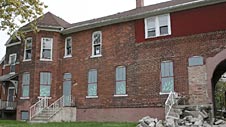
The Sunday Chicago Tribune had a cover story over the weekend about the gentrification of the North Pullman neighborhood. For those of you who don’t know, Pullman is a Landmarked State and National Historic District (one of the few in the country that has city, state and national landmark status) located on the far South Side of Chicago. It was founded by George Pullman, the railroad magnet, for his factory workers.
If you haven’t ever been down there to check it out- I encourage you all to do so. (And no, it’s not dangerous.) Pullman is a wonderful little neighborhood that does- yes- border some not so great areas (like Roseland.)
Pullman is composed of two parts: North Pullman and South Pullman. As the Tribune article indicates, South Pullman has been much more gentrified than the North, which received landmark status much later and too late to save some of the buildings. But one bank is trying to revive North Pullman. From the Tribune:
Park Bank Initiatives, a non-profit subsidiary of Park National Bank, has embarked on an ambitious project to fix up some of the two- to four-bedroom row houses in the northern part of the neighborhood. The work, which has been recognized with a historic preservation award, is part of a larger movement to spur development and help restore that part of the neighborhood to its glory.
“It’s very significant,” said Michael Shymanski, president of the Historic Pullman Foundation and a longtime Pullman resident. “The bank understands that you need these pioneering efforts to set some good examples of what the standard should be for people who want to come in and improve part of the district. And the stuff that they do is quite good.”
The problem with North Pullman is that it is very down on its luck. Park Bank Initiatives is hoping that by restoring some of the rowhomes, that others will follow (after seeing that the neighborhood is on the upswing.) But will they?
I’ve been in both North and South Pullman. The North side is beset by foreclosures and there are homes with boarded up windows. It didn’t feel safe to me.
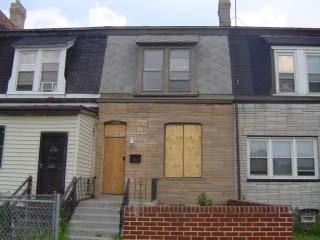
This house is currently under foreclosure and on the market in North Pullman. Not much of the original facade remains.
10639 S. Champlain: 3 bedrooms, 1 bath rowhouse
- Currently listed for $51,950
- Built in 1881
- Sold “as-is”
- Probably around 1300 square feet: bedroom sizes are 14×12, 12×7, 12×7
- No garage- but many times one can be added in the back
While there has been more gentrification and restoration in South Pullman, there are still quite a few properties in the south that are also in need of “help.”

11451 S. St. Lawrence: 3 bedroom, 1.5 bath rowhouse
- Currently listed for $119,900
- 1 car garage
- Built in 1888
- Taxes of $1203.65
- Square footage and bedroom sizes the same as the rowhouse above
You can see that this rowhouse also needs some TLC.

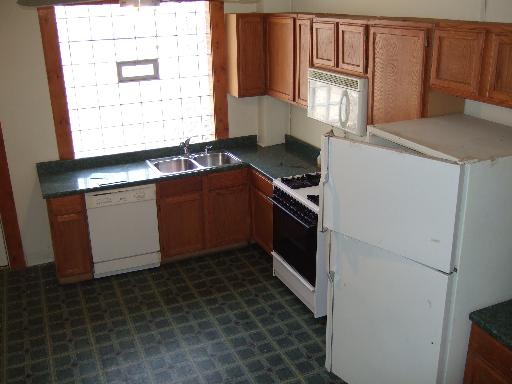
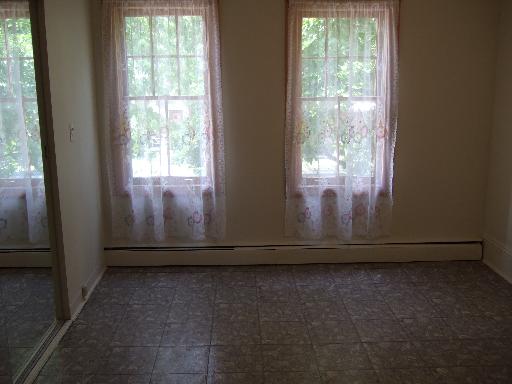
With some cosmetic changes, this rowhouse could be a nice condo alternative.
You can find out more about what’s available in Pullman from the Pullman Neighborhood Organization webpage. Also, some realtors specialize in the neighborhood. Michael Wolski from Coldwell Banker lives in the neighborhood and has many of the listings.
There are several different models of rowhomes. Some were built for the workers, some for skilled craftsman and some for the executives, so obviously, size and features will vary depending on the type of home you’re looking at.
Prices for most of the rowhomes in South Pullman range from $100,000 to $240,000 (depending on how extensively the home is restored and its size.) A few of the bigger executive homes would probably sell for more. Prices have also gone up in South Pullman considerably in just the past few years. Some of the restored rowhomes are beautiful.
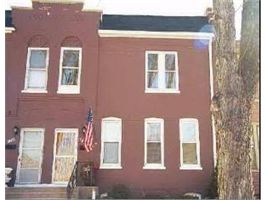
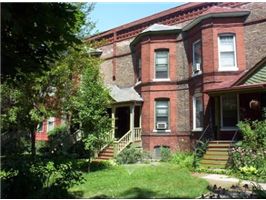
If you’re interested in seeing inside some of them, Pullman has a Fall House Tour every October. Tickets are reasonably priced. It’s a good way to see inside a variety of the home types.
My only gripe with the area is that there is little to do there. There are no cafes, no coffee shops and no restaurants to walk to (except a nearby McDonalds, but that doesn’t count.) Some of the residents I’ve talked to have said they would “love it” if a restaurant chose to open up somewhere near or in the neighborhood. The nearest restaurants are in Beverly.
The State is currently restoring the Marketplace building that burned down a few decades ago. What will go in that space? Will they truly return it back to a market? A market/grocer with a coffeeshop would be ideal and much needed in the neighborhood.
Anyone from Pullman that knows of any efforts to get more retail or restaurants to the area, please let me know. With a few coffee shops or, say, a Thai restaurant, the area could be an undiscovered gem on the south side. And you’ll all be saying: “Remember when those historic rowhouses were only $150,000?”
A slight correction: the State of IL is not restoring the Market Hall building; that is owned by the Historic Pullman Foundation. The State is restoring the historic Hotel Florence, which is (with the Pullman factory buildings) part of the Pullman State Historic Site. The Hotel is scheduled to be reopened to the public in Summer 2013, and will include a catering kitchen, dining and meeting spaces, and space for a possible brewpub/cafe in the hotel lounge. Most residents do not mind seeking entertainment elsewhere, as it means fewer parking hassles, etc. None of us want this to become Wrigleyville or Bucktown!
PS – Pullman is gearing up to become the city’s newest arts Mecca, with the possibility of disused Pullman Railcar Factory buildings becoming live/work studio spaces. We’re also very green, with a thriving community garden, beekeeping cooperative, and recycling initiative.